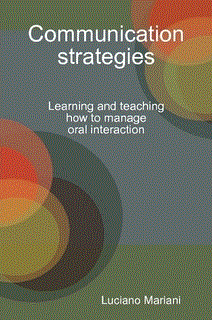Learning Paths
Communication strategies

|
Intercultural communication strategies for learner autonomy (In Menegale, M., (2013) (Ed). Autonomy in language learning: Getting learners actively involved. IATEFL: Canterbury, UK.) This paper argues for strategy education across the curriculum as a whole-person engagement, involving the activation of cognitive, affective and social factors, and as a descriptive, experiential and explicit pedagogical approach.
Developing strategic competence: towards autonomy in oral interaction (Perspectives, a Journal of TESOL-Italy - Vol. XX, No. 1 June 1994) Strategic competence - solving communication problems despite inadequate command of the linguistic/sociocultural code - is an important feature of both L1 and L2 interaction. Teaching approaches will have to ensure that students consider authentic situations where strategies play a significant role; become aware of strategies through observation and discussion; and face problem-oriented, open-ended interactive tasks which require strategy use to negotiate meanings and intentions.
Teaching communication strategies for oral interaction ("Changing contexts in ELT" - Papers from the 1993 British Council Sorrento Conference) The aim of this paper is to discuss how communication strategies, through which strategic competence can be developed, can inform language teaching and learning. The focus is on oral interaction at the intermediate level.
|
|
